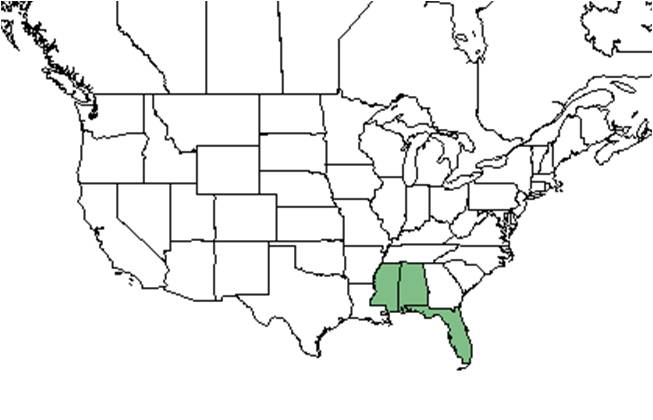Spermacoce prostrata
| Spermacoce prostrata | |
|---|---|

| |
| Photo by Shirley Denton (Copyrighted, use by photographer’s permission only), Nature Photography by Shirley Denton | |
| Scientific classification | |
| Kingdom: | Plantae |
| Division: | Magnoliophyta - Flowering plants |
| Class: | Magnoliopsida – Dicotyledons |
| Order: | Rubiales |
| Family: | Rubiaceae |
| Genus: | Spermacoce |
| Species: | S. prostrata |
| Binomial name | |
| Spermacoce prostrata Aubl. | |

| |
| Natural range of Spermacoce prostrata from USDA NRCS Plants Database. | |
Common name: prostrate false buttonweed
Contents
Taxonomic notes
Synonyms: Borreria ocymoides auct. non (Burm. f.) DC.; Spermacoce ocymoides auct. non Burm. f.; Spermacoce repens auct. non (DC.) Sessé & Moc., from USDA NRCS Plants Database.
Description
Prostrate or decumbent annual herbs to 40 cm tall, branching mostly near the bases, leafy stems 0.4-2 mm thick, glabrous or rarely with thin hairs to 0.8 mm long, with 4 longitudinal ribs 0.1-0.3 mm high; stipule sheaths 1-3 mm high, 1.5-6 mm broad, with 3-9 awns 1-2 mm long. Leaves opposite or pseudoverticillate with 2-4 smaller axillary leaves at each node, sessile or subsessile; leaf blades 10-35 mm long, 2-18 mm broad, elliptic to narrowly elliptic or elliptic-lanceolate, apex acute (obtuse), base cuneate and decurrent on petiole, drying membranaceous to chartaceous, greenish or yellowish brown, glabrous or with minute (0.2 mm) stiff hairs above and below, scabrous on the margin, 2º veins 2-4/side. Inflorescences mostly axillary (sometimes terminal), 2-4 mm high and 3-8 mm broad, flowers few (3-8) to many (ca. 20) and sessile. Flowers with hypanthium 0.5-1 mm long, calyx lobes usually 2 larger and 2 smaller, 0.6-1 mm long; corolla white, less than 3 mm long. Fruits ca. 2 mm long, body of the fruit 0.8-1.2 mm long; seeds 0.7-1.2 mm long, 0.3-0.5 mm broad, reticulate, often with longitudinal ridges (x 10) and distinctive transversely elongated pits (x40), dark reddish brown.[1]
Distribution
It is found in Florida, Alabama and Mississippi. Outside of the United States it is found in the west Indies and South America[2].
Ecology
Habitat
In the Coastal Plain in Florida, S. prostrata occurs in river floodplain forests, longleaf pine woods and powerline corridors. It has been observed growing in loamy sand[3].
Phenology
Flowers and fruits in October (FSU Herbarium).
Pollination
The following Hymenoptera families and species were observed visiting flowers of Spermacoce prostrata at Archbold Biological Station: [4]
Halictidae: Lasioglossum lepidii
Sphecidae: Anacrabro ocellatus, Cerceris blakei
Vespidae: Leptochilus alcolhuus, Pachodynerus erynnis, P. nasidens, Parancistrocerus salcularis rufulus, Stenodynerus fundatiformis
Conservation and management
Cultivation and restoration
Photo Gallery
Flowers of Spermacoce prostrata Photo by Shirley Denton (Copyrighted, use by photographer’s permission only), Nature Photography by Shirley Denton
References and notes
- ↑ Berger, W., ed. 1993. Flora Costaricensis. Fieldiana Botany New Series, No. 33: Family #202 Rubiaceae.
- ↑ [[1]]Saint Lucian Plants. Accessed: March 17, 2016
- ↑ Florida State University Robert K. Godfrey Herbarium database. URL: http://herbarium.bio.fsu.edu. Last accessed: November 2015. Collectors: Loran C. Anderson, Robert K. Godfrey. States and Counties: Florida: Calhoun, Franklin, Liberty, Wakulla. Compiled by Tall Timbers Research Station and Land Conservancy.
- ↑ Deyrup, M.A. and N.D. 2015. Database of observations of Hymenoptera visitations to flowers of plants on Archbold Biological Station, Florida, USA.
